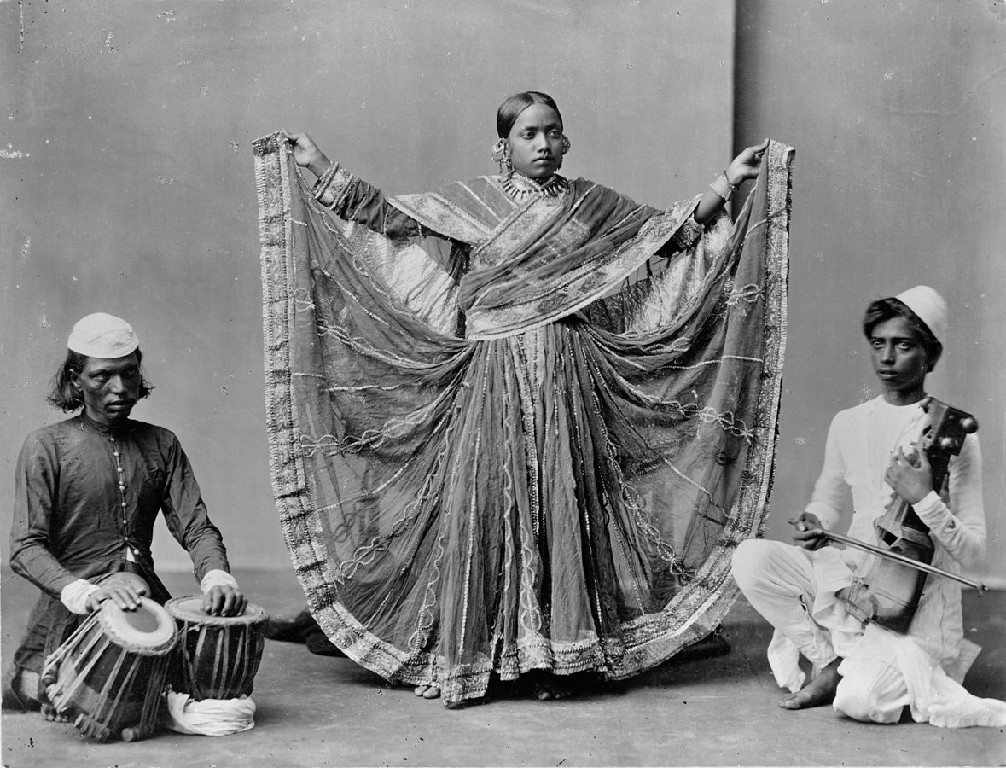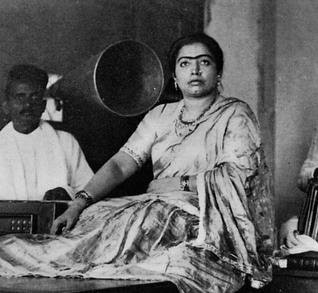Shreya Sharma
Today, Old Delhi is synonyms to shopping, scrumptious street food and Instagram able shoot locations-hiding it’s rich history of courtesans in plain sight. Throughout the centuries, courtesans have held a significant and often misunderstood place in the social fabric. Specialists in arts and music-courtesans were more than just tawaifs. The hawelis in Old Delhi housing them were more then what we considered as kothas-they were a vibrant space for the royalty and the nobility to come, experience and appreciate the culture. They were not just venues for entertainment but also served as intellectual hubs where poets, writers, and artists gathered to exchange ideas and engage in literary discussions. Many renowned poets and writers found inspiration in the atmosphere of kothas, and their works often reflected the themes and emotions prevalent in the courtesan culture. Many cities like Kolkata and Mumbai also had these vibrant centres that advocated for arts and culture and became synonymous with sophistication, refinement, and artistic excellence. They were also centers of fashion and style, influencing trends in clothing, jewellery, and grooming. Courtesans were known for their exquisite attire and accessories, which often set the tone for fashion trends among the elite classes. They were trendsetter in many ways- empowering women in the patriarchal society of India.

The incredible story of Begum Samru who went on to become a queen from a courtesan is one such incredible story. During Shah Alam II’s rule, she commanded her mercenary army and built an estate which was valued at about 4 billion USD. In a society where women’s economic independence was rare, Begum Samru’s success in accumulating wealth and building a power base is an example of feminist agency. She demonstrated that women could wield economic power and influence outside the confines of traditional gender roles. Her ability to command the loyalty and respect of her soldiers, many of whom were men, challenges traditional notions of female leadership and highlights her capacity to navigate male-dominated spheres of power. Begum Samru’s rise to power occurred in a society where women were often subjected to subordinate roles. Her ability to assert authority and command respect in a patriarchal society speaks to her strength of character and determination to overcome gender-based barriers. During my visit to Sardana, the local people fondly talked about Begum Samru and proudly talked about how Sardana accepted a woman as their Queen during times when allowing women outside the four walls was considered a taboo. This shows the reverence bestowed upon a courtesan and how her independence and strong personality outshined the stigma associated with the profession she cam from.
The ability to excel in a variety of artistic mediums, including as dancing, poetry, music, and conversation, set courtesans apart. These skills not only provided them with economic opportunities but also served as a means of asserting agency and gaining social influence. Their relationships with noblemen, scholars, and rulers granted them access to spaces where women were traditionally excluded, allowing them to hold a form of power and influence that was uncommon for women of their time. They had the agency to navigate the patriarchal hierarchies and make a name in the society that often limited opportunities for women. This in turn gave them opportunity to attain financial independence; giving them the resources to a life on their own terms. This economic independence was a form of economic resistance in a traditional family structure where economic agency was typically reserved for men.

One of the most famous courtesans was Gauhar Jaan who became the first Indian artist to record her singing in a gramophone in early 20th century. Gauhar Jaan’s contributions to Indian classical music and her impact on popular culture illustrate her significant cultural influence. Despite the societal stigma attached to courtesans, Gauhar Jaan proudly embraced her heritage and identity. She did not shy away from acknowledging her roots as a courtesan, instead choosing to celebrate her lineage and heritage. Her assertion of agency and self-assurance served as an inspiration to countless women, both within and outside the courtesan community.
Another courtesan who was immensely popular was Janki Bai Allahabadia. Vidya Shah in her book jalsa writes: “It is said that roads leading to the record shops would get blocked by lovers of her music whenever a new stock of discs arrived. Many of her records sold over 25,000 copies, something unheard of till then even for highly accomplished singers of her time.” These examples show the kind of success and fame a courtesan could achieve in a society dominated by men. Her cultural influence extended beyond her immediate community, highlighting the power of her artistry to transcend social barriers and challenge stereotypes associated with courtesan culture. Janaki Bai’s very existence as a successful courtesan and performer can be seen as a form of resistance to patriarchal norms and restrictions placed on women’s lives.
Nargis Dutt’s mother Jaddan Bai moved to Bombay and started her own film company, sangeet movietone. This entrepreneurial endeavor was groundbreaking in an industry dominated by men, showcasing her determination to challenge traditional gender roles and assert herself as a leader in the burgeoning world of Indian cinema.Vidya Shah writes: “The world of cinema was a dynamic, heterogeneous space, in which Jaddan Bai began negotiating her identity both as a woman and a former tawaif…. Jaddan Bai led the way for women who wanted to find space in the male-dominated world of cinema and its newfound sensibilities.” Jaddan Bai’s presence in the male-dominated film industry provided much-needed representation for women in positions of power and influence. As a filmmaker, she contributed to shaping the narratives and imagery presented onscreen, offering audiences a perspective that was often overlooked in mainstream cinema.
Nobels recognized the value of cultural education that could be instilled in their children by the courtesans. Author and historian Pran Nevile, In his book Nautch Girls of India: Dancers, Singers, playmates, described how the tawaifs of North India enjoyed wealth, power, prestige, political access, and were considered authorities on culture. Noble families would send their sons to them to learn etiquettes.
Courtesans wielded considerable social influence and were connected to influential circles. By sending their sons to the courtesans, nobles sought to expose them to a network of influential personalities. This in turn provided opportunities for their sons to facilitate access to spheres of power and influence. Courtesans were patrons and practitioners of various art forms, including music, dance, poetry, and literature. Exposure to these artistic pursuits was considered essential for the well-rounded education of young noblemen in order to instil cultural sophistication. The morals and values introduced by the courtesans inadvertently was feminist in nature. This practise challenged the traditional gender roles and the notion that the women’s only role was within the domestic sphere.

Courtesans were not immune to the intrigues of politics and power. Through their connections with influential patrons, they often found themselves embroiled in political affairs, acting as intermediaries, advisors, or even covert agents. Courtesans could sway opinion, broker alliances, and influence decision-making behind the scenes, making them significant players in the political landscape of their time. In times when women were expected to concentrate on their traditional duties, carving a way and creating influence in spheres like politics must have been empowering and an important step towards women equality.

Another side of the Courtesan culture that is often unexplored is the concept of community. Courtesans often formed tight-knit communities that provided support and solidarity. Within these communities, women could find companionship, mentorship and protection, creating spaces of empowerment amidst societal constraints. These communities also became a safe space for women who were either orphaned, divorced or ostracised from the society. Women provided each other with practical and emotional support. They offered advice, assistance, and encouragement to navigate the complexities of their profession and personal lives. Whether it was sharing household responsibilities, childcare duties, or offering a listening ear during times of distress, the bond fostered a sense of sisterhood and mutual care. Despite the social stigma associated with their profession, courtesans found empowerment and agency within their community. Within the confines of their community, they were able to exercise autonomy over their artistic pursuits, financial decisions, and personal relationships. The supportive environment allowed women to assert their individuality, express their creativity, and pursue their aspirations without fear of judgment or censure.
It is essential to recognize the nuanced ways in which these women navigated and subverted the constraints imposed upon them, challenging traditional notions of gender and power. They emerged as feminist figures through their multifaceted expressions of agency, resilience, and resistance within a patriarchal society. Despite the societal constraints and stigma associated with their profession, courtesans wielded significant power and influence, challenging traditional gender norms and advocating for greater autonomy and empowerment for women. They often served as cultural intermediaries between different social groups, bridging divides of class, caste, and religion through their performances and patronage. Courtesan’s reputations for elegance, charm, and sophistication made them influential figures in fashion, etiquette, and social mores, shaping norms of behaviour and social interactions among the elite. Through their artistic talents, economic independence, and cultural patronage, courtesans asserted their right to self-determination and challenged the status quo, paving the way for future generations of women to assert themselves in a male-dominated world.

About Author
Shreya Sharma (She/Her) currently heads the restoration department at the Devi Art Foundation in India. She has also co-curated various private and public exhibitions in Delhi. Being an oral historian who focuses her research on lived experiences of partition survivors of 1947, she aims to promote an alternative narrative in curatorial space. She has been invited by various international educational institutions like university of Glasgow, University of York and University of Edinburgh to share her research on how institutions can incorporate oral history as a tool to make their collection and narrative more diverse and inclusive. She has also worked with various international institutions as a curator and decolonization consultant and has been part of various international curatorial forums. She strongly believes in bringing the museum to the people with interactive and immersive activities and advocates for a cultural space for the people- by the people.
